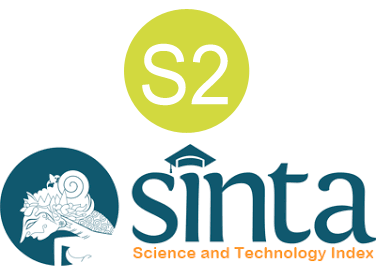Motif Flora Dan Fauna Pada Candi Hindu Masa Kedatuan Sriwijaya Untuk Pembelajaran Sejarah
DOI:
https://doi.org/10.37329/jpah.v9i1.3609Keywords:
Flora and Fauna Motifs, Sriwijaya Hindu Temple, History EducationAbstract
This study aims to explore the themes of flora and fauna motifs on Hindu temples during the Srivijaya period as part of the study of the history and art of religious architecture. The main objective is to understand how these motifs reflect the cosmology and spiritual values of Hindu society during that period. The research methods used include descriptive analysis of temple reliefs in Sumatra, literature review of archaeological sources, and comparison with motifs on other Hindu temples in Southeast Asia. This analysis technique involves detailed observation of floral elements such as leaves, lotus flowers, and trees, as well as fauna such as birds, snakes, and mythological animals, which are often found on temple reliefs. The discussion focuses on the symbolic meaning of these motifs, where flora is often associated with fertility and life, while fauna symbolizes strength and wisdom. This study also discusses how these motifs function as a medium to convey spiritual values and emphasize the harmonious relationship between humans and nature. The conclusion of this study shows that the flora and fauna motifs on Srivijaya Hindu temples not only function as aesthetic elements, but also have deep religious meanings. These motifs provide important insights into how the Srivijaya people combined their beliefs with a respect for nature, as well as their contribution to the understanding of Hindu history and culture in the archipelago.
References
Anggraini, K. H., Bawono, A. R., & Titasari, C. P. (2017). Aplikasi Motif Hias Tinggalan Arkeologi Masa Hindu-Budha Menjadi Motif Hias Batik di Daerah Istimewa Yogyakarta dan Trowulan. Jurnal Humanis, 21(1), 31–36.
Bosch, F. (1930). Verslag Van Een Reis Door Sumatra. Ouheidkundige Verslag, 151-152.
Brandes, J. (1902). Ouheden Encylopedie van Nederlandsch Indie. Nederlandsch Indie.
Budisantosa, T. M. S., Susanto, H., Siregar, S. M., & Purwanti, R. (2000). Berita Penelitian Arkeologi: Analisis Candi Bumiayu 3 Kabupaten Muaraenim, Provinsi Sumatera Selatan. Balai Arkeologi Palembang, Palembang.
Dhanty, D. R. A., & Susanti, L. R. (2024). Remains of the Bumi Ayu Site as Evidence of Religious Tolerance During the Sriwijaya Independence Period. Santhet (Jurnal Sejarah Pendidikan Dan Humaniora), 8(1), 151-159.
Febrianto, R., & Idris, M. (2016). The Story Of The Fauna Reliefs At Borobudur Temple. Kalpataru: Jurnal Sejarah Dan Pembelajaran Sejarah, 2(2), 44-56.
F.M. Schnitger. (1937). The Archaeology of Hindoo Sumatra. Leiden: E. J. Brill.
Istanto, R., & Syafii, S. (2017). Ragam Hias Pohon Hayat Prambanan. Imajinasi: Jurnal Seni, 11(1), 19-28.
Kamilah, S. N., Saprianto, D., & Jarulis, J. (2013). Perilaku Grooming Macaca Fascicularis Raffles, 1821 di Taman Hutan Raya Rajolelo Bengkulu. Jurnal Ilmiah Konservasi Hayati, 9(2), 1–6.
Kartoatmodjo & Soekarto, M. (1993). Temuan Prasasti Boom Baru di Sumatera Selatan dan Masalah Taman Sri Ksetra dari Kerajaan Sriwjaya. Palembang: Museum Negeri Provinsi Sumatera Selatan Balaputra Dewa.
Knaap, A. J. (1904). Rapport Van Den Controleur Der Onderafdeeling Lematang Ilir Van De In De Lematang Streek Tusschen Benakat En Modong Aangetroffen Oudheden. Notulen van het Bataviaasch Genootschap, 42.
Muhajirin. (2010). Dari Pohon Hayat Sampai Gunungan Wayang Kulit Purwa (Sebuah Fenomena Transformasi Budaya). Imaji, 8(1), 33–51.
Nizam, A., & Gustami, S. P. (2018). Eksistensi Ragam Hias Sulur Gelung Teratai. Journal of Urban Society's Arts, 5(1), 37-48.
Rambosius, Setyawati, T. R., & Riyandi. (2019). Inventarisasi Jenis-jenis Ular (Serpenthes) di Kawasan Universitas Tanjungpura Pontianak. Jurnal Protobiont, 8(2), 35-46.
Rangkuti, N., Marhaeni, T., Siregar, S. M., Hardiati, E. S., Astiti, N. K. A., Putrina, E. A., & Purwanti, R. (2019). Tabir peradaban sungai Lematang: Kajian Sriwijaya Di Kawasan Percandian Bumiayu. Palembang: Balai Arkeologi Sumatera Selatan
Ratnawati, L. D. (1989). Variasi Relief Kalpataru pada Candi Prambanan. Dalam Proceding Pertemuan Ilmiah.
Rowland, B. (1956). The Art and Architecture of India. London: Penguin Books, Ltd.
Satari, S. S. (2002). Sebuah situs Hindu di Sumatra Selatan: Temuan kelompok candi dan arca di Bumiayu. 25 Tahun Kerjasama Pusat Penelitian Arkeologi dan École française d’Extrême-Orient, 113-32.
Sentosa, A. A., & Suryandari, A. (2014). Habitat dan Biologi Labi-Labi di Kabupaten Kutai Kartanegara, Kalimantan Timur. Pengembangan Teknologi Terapan Untuk Meningkatkan Produksi Perikanan. Seminar Nasional Perikanan Indonesia, 20(21), 25-31.
Setiawan, R. (2019). Kinara Kinari pada Relief Candi Badut sebagai Ide Penciptaan Motif Batik Malangan. Jurnal Imajinasi, 13(2), 35–42.
Siregar, S. M. (2018). The Statues and Plants and Animals in Bumiayu Temples Region Tanah Abang Sub District, Penukal Abab Ilir Regency. Indonesian Journal of Environmental Management and Sustainability, 2(2), 54-63.
Siswanto, A., & Ardiansyah. (2021). Arsitektur Candi Sriwijaya (Cet-1). Yogyakarta: Pohon Cahaya
Suleiman, S. (1976). Pictorial Introduction to the Ancient Monuments of Indonesia. Oregon: Archaeological Foundation.
Tombrink, E. P. (1869). Hindoe-Monumenten in de Bovenlanden van Palembang, Als Bron Van Geschiedkundig Onderzoek. Leiden: Nijhoff.
Utomo, B. B. (1993). Situs Percandiaan Tanah Abang. In Laporan Penelitian Arkeologi.
Utomo, B. B. (1994). Menyingkap Lumpur Lematang: Dalam Sriwijaya dalam Perspektif Arkeologi dan Sejarah. Palembang: Pemerintah Daerah Tingkat I Sumatera Selatan.
Wulandari, T. (2015). Konsep Tribuana/Triloka pada Ornamen Relief Kalpataru di Kompleks Candi Prambanan Sebagai Ide Penciptaan Karya Kriya Seni. Corak: Jurnal Seni Kriya, 4(1), 63-71
Downloads
Published
How to Cite
Issue
Section
License
Copyright (c) 2025 Retno Susanti, Didi Suhendi, Ria Amalia, Fadela Septi Wahyuni

This work is licensed under a Creative Commons Attribution-ShareAlike 4.0 International License.
An author who publishes in the Jurnal Penelitian Agama Hindu agrees to the following terms:
- Author retains the copyright and grants the journal the right of first publication of the work simultaneously licensed under the Creative Commons Attribution-ShareAlike 4.0 License that allows others to share the work with an acknowledgement of the work's authorship and initial publication in this journal
- Author is able to enter into separate, additional contractual arrangements for the non-exclusive distribution of the journal's published version of the work (e.g., post it to an institutional repository or publish it in a book) with the acknowledgement of its initial publication in this journal.
- Author is permitted and encouraged to post his/her work online (e.g., in institutional repositories or on their website) prior to and during the submission process, as it can lead to productive exchanges, as well as earlier and greater citation of the published work (See The Effect of Open Access).
Read more about the Creative Commons Attribution-ShareAlike 4.0 Licence here: https://creativecommons.org/licenses/by-sa/4.0/.








